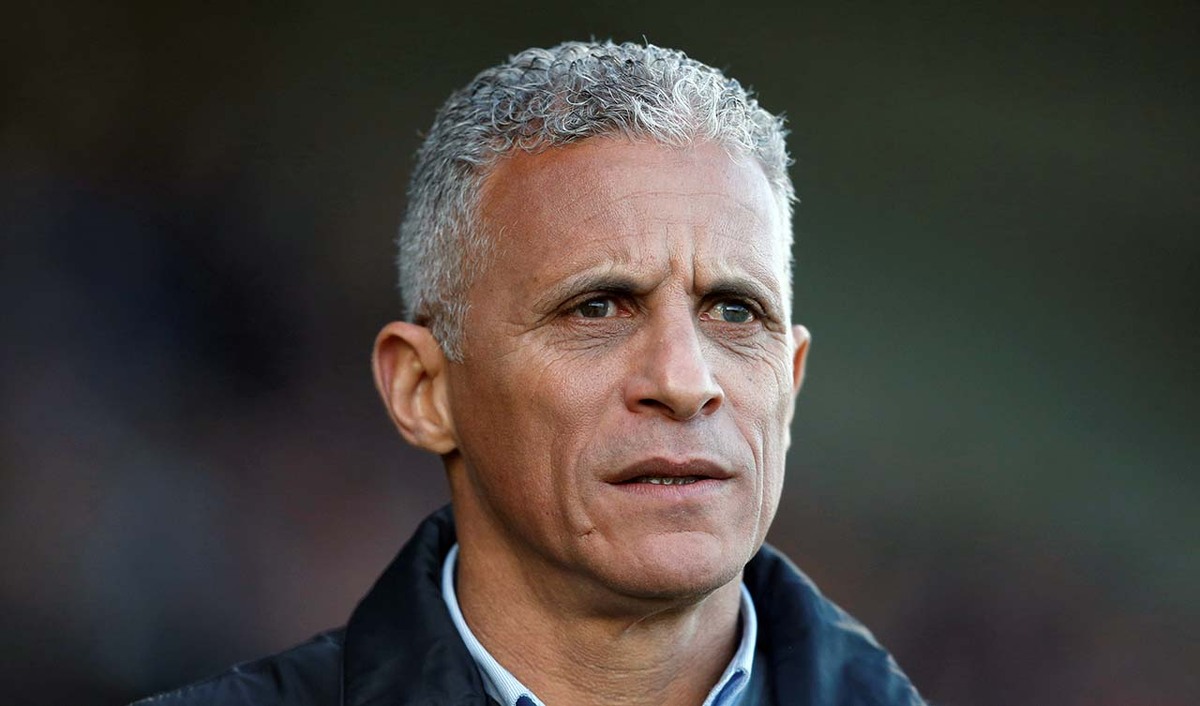Crossing and finishing with combination play
This session is about how quick and measured combination play – in midfield and wide areas – using short and long passing as well as overlaps and third-man runs, can create simple and effective goalscoring opportunities for attackers.

| Area | Half pitch |
| Equipment | Balls, cones, goals, mannequins |
| No. of Players | Up to full squad |
| Session Time | 30mins |
This session is about how quick and measured combination play – in midfield and wide areas – using short and long passing as well as overlaps and third-man runs, can create simple and effective goalscoring opportunities for attackers.
While it focuses primarily on the set-up players, the session also looks at movement of forwards’ runs, timings and finishing, and we will build in psychological depth in terms of ensuring midfielders and wingers are positive and optimistic in their approach play in the same way that attackers are aggressive when challenging for the ball.
Although a simple outline, the mastering of a crossing a finishing practice is something that cannot be taken for granted. After all, this is a set-up that’s relevant for every match we play in, since getting the ball to wide areas has been seen to be the most effective route for scoring goals for almost every successful team at every level.
What do I get the players to do?
Basic set-up
We set up a crossing and finishing circuit, as shown (1). The move starts at the centre circle with a pass fed wide into a 15x15-yard boxed area on the left-hand side. Here, one player receives and turns, while the other makes a positive forward run up the wing, evading the attentions of the mannequins in preparing to receive a threaded pass from his team mate.
1

2. The ball is fed to the wing where the wide man controls, turns and lays a pass forward
3. His team mate out wide makes a run between the mannequins and receives the pass
4. Attackers make crossover runs in the box
5. The ‘serving’ midfielder arrives from deep to cover the central area
Once the pass is received, the winger sends a cross into the penalty area. Attackers, who are stationed on poles at the edge of the box, make crossover runs in attacking the ball, and are joined by the original ‘serving’ midfielder, who makes a late run into the box to cover the central area. We now run the practice on the other side of the pitch, rotating players frequently.
How do I progress the session?
A simple progression is to encourage players to ‘mix up’ passing options. So in the example shown (2), a short pass in the wide box means the initial receiver is the man who makes the forward break, while instead of a cross towards the centre of the goal, this time a short, grounded pass is played into the attacker, who has made a wide-angled, ambitious third-man run around the mannequin.
2

Being unpredictable and responsive to passing options as they present themselves is important, so in the next progression, attackers ignore wide options initially to begin an offensive move through the centre (3). Hold-up play and short passing on the edge of the box sees a diagonal pass out wide, with the final cross arriving at the near-post.
3

And in the final progression we begin to bring in defenders to offer a realistic obstacle to goal (4). These can be passive at first, becoming active as soon as attackers feel they have mastered the challenge. Naturally, we can experiment with player numbers, can condition touches, plus work on switching options, perhaps demanding that the ball must be moved from one box to the other before a wide attack can develop.
4

What are the key things to look out for?
We want to see realistic movements of players and a quality delivery every time. Having forwards know the best areas to attack (and being organised in doing so) is essential, so we demand accomplished movement and aggression, appreciation of the pass into wide areas, precise crosses and, of course, good communication between teammates.
Editor's Picks
Attacking transitions
Deep runs in the final third
Using the goalkeeper in build-up play
Intensive boxes drill with goals
Penetrating the final third
Creating and finishing
My philosophy
Pressing initiation
Compact team movement
Coaches' Testimonials

Alan Pardew

Arsène Wenger

Brendan Rodgers

Carlos Carvalhal

José Mourinho

Jürgen Klopp

Pep Guardiola

Roy Hodgson

Sir Alex Ferguson

Steven Gerrard
Coaches' Testimonials

Gerald Kearney, Downtown Las Vegas Soccer Club

Paul Butler, Florida, USA

Rick Shields, Springboro, USA

Tony Green, Pierrefonds Titans, Quebec, Canada
Join the world's leading coaches and managers and discover for yourself one of the best kept secrets in coaching. No other training tool on the planet is written or read by the calibre of names you’ll find in Elite Soccer.
In a recent survey 92% of subscribers said Elite Soccer makes them more confident, 89% said it makes them a more effective coach and 91% said it makes them more inspired.
Get Monthly Inspiration
All the latest techniques and approaches
Since 2010 Elite Soccer has given subscribers exclusive insight into the training ground practices of the world’s best coaches. Published in partnership with the League Managers Association we have unparalleled access to the leading lights in the English leagues, as well as a host of international managers.
Elite Soccer exclusively features sessions written by the coaches themselves. There are no observed sessions and no sessions “in the style of”, just first-hand advice delivered direct to you from the coach.









